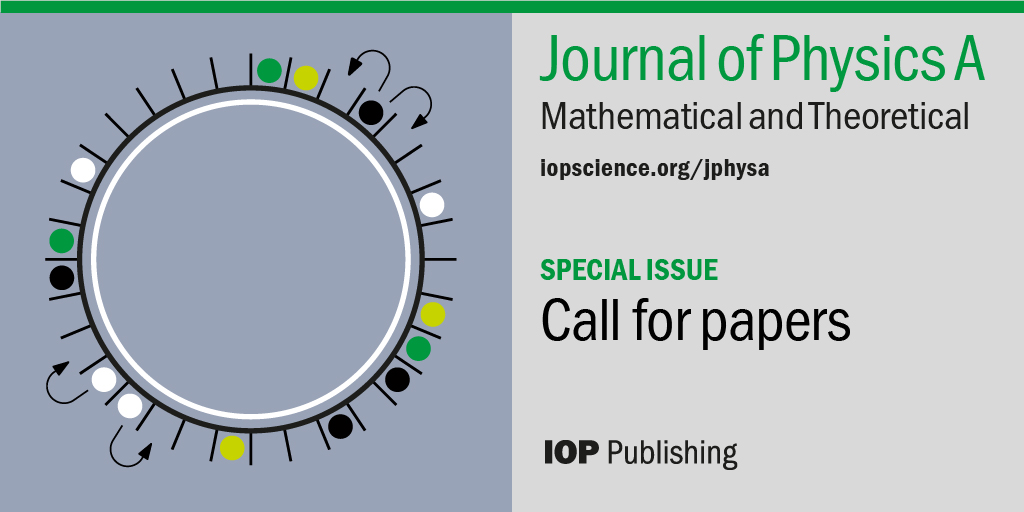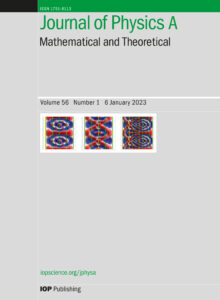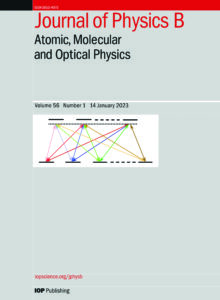JPhysA&JPhysB联合特刊征稿|Quantum Metrology and Precision Measurement

特刊详情
客座编辑
- 蔡建明,中国科学技术大学
- 李朝红,深圳大学
- 何琼毅,北京大学
- 管习文,中国科学院精密测量科学与技术创新研究院
主题范围
Metrology aims at achieving precision measurement in various parameter estimation tasks, and plays a crucial role in science and technology, underpinning, for example, time and frequency standards, chemical and material analysis, navigation and geo-prospecting, as well as fundamental physics from sub-nano to galactic scale. In any estimation by classical approaches, the statistical error shows a scaling proportional to the square root of the number of uncorrelated repetitive measurements – the so-called standard quantum limit. In contrast, quantum metrology uses the non-classical strategies of quantum mechanics such as quantum entanglement to realize better measurement precision. Over the past decades, identifying the ultimate achievable precision limit governed by quantum mechanical laws and finding measurement schemes to reach that precision has initiated an intense research effort. More recently, quantum metrology for enhanced precision measurement has become a distinct and rapidly growing field within the area of quantum science and technology, leading to a range of promising real-world applications, including gravitational wave as well as weak force detection using quantum optomechanical systems, ultra-precise timekeeping based on atomic clocks, enhanced inertial sensing with matter wave interferometry, sensitive electric and magnetic field measurement through Rydberg atoms, trapped ions, solid-state spins as well as superconducting circuits.
The purpose of this special issue is to exhibit the diversity of this research, especially covering the important theoretical and experimental progress in quantum-enhanced precision measurement. Theoretically, we expect that some of the contributions could continuously generalize and refine the quantum metrological theory to embody more realistic sensing scenarios, e.g., developing effective tools to identify the ultimately attainable precision limits and giving rise to the optimal measurement protocols. We also expect that more alternative quantum sensing schemes, which exploit novel quantum properties/phenomena to further improve the currently achievable measurement performance, could be proposed and established. Experimentally, we hope that the contributions are able to boost the advance of quantum sensing technology with new capabilities, large bandwidths, extremely high sensitivity and spectral/spatial resolution.
投稿流程
特刊文章与JPhysA和JPhysB期刊常规文章遵循相同的审稿流程和内容标准,并采用同样的投稿模式。
有关准备文章及投稿的详细信息,可以参阅IOPscience页面的作者指南。
作者可登入期刊主页进行在线投稿,先选择“文章类型”,然后在“选择特刊”的下拉框中选择“Special Issue on Quantum Metrology and Precision Measurement”。
投稿截止日期:2024年12月31日。
期刊介绍

- 2022年影响因子:2.1 Citescore:4
- Journal of Physics A: Mathematical and Theoretical(JPhysA)每年出版50期,针对运用数学结构来描述物理世界的基本过程,并探索这些结构的分析、计算和数值方法。期刊内容涵盖:统计物理;非平衡系统、计算方法和现代平衡理论;混沌和复杂系统;数学物理;量子力学和量子信息理论;场论和弦理论;流体和等离子体理论;生物模型等方面。文章类型包括原创性论文和综述,以及关注于热点研究的专题综述和特刊,提供及时、全面的纵览。

- 2022年影响因子:1.6 Citescore:3.1
- Journal of Physics B: Atomic, Molecular and Optical Physics (JPhysB) 主要发表原子、分子和光物理方面的重要和高质量的研究,内容涵盖原子物理、分子和集群结构、性能和动态、原子与分子碰撞、冷物质、光学和激光物理学、量子光学、信息和控制、超高速、高场和X射线物理学,以及天体物理学和等离子体物理学。除了原创性研究论文、专题综述和特刊外,本刊还出版快报、研究路线图、指导论文、特邀文章和专家观点等内容。
